Sense DefinitionThe word "sense" describes an organism's physiological ability to recognize and react to environmental cues. Sensory receptors, specific cells dispersed throughout the body, gather sensory data. The brain processes and interprets this information after it is transmitted, enabling the organism to react properly to its environment. We use a variety of senses, including the traditional five senses of sight, hearing, smell, taste, and touch, to comprehend the world around us. 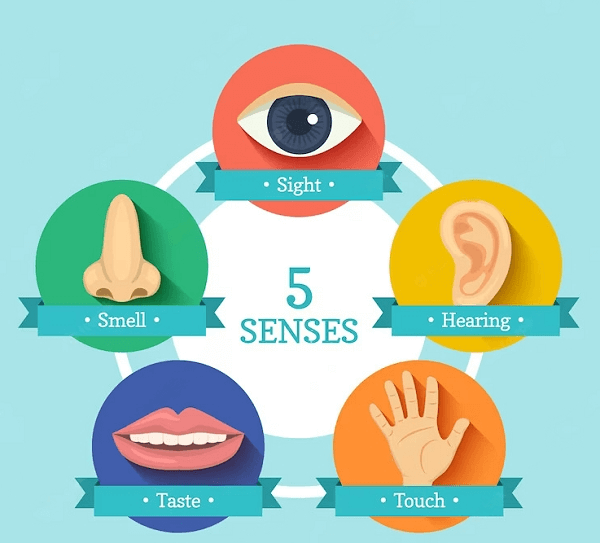
Other sensations that affect how we perceive ourselves and our surroundings include proprioception, vestibular sense, and interoception. Our senses are essential to survival and well-being because they help us interact with others, connect with the outside world, and enjoy life. The five conventional senses are touch, taste, scent, hearing, and sight. Each sensation is briefly described below: SightThe capacity to recognize things and discern light is known as sight or vision. Photoreceptors are specialized cells in the retina that sense light and send signals to the brain. The pictures we see are the result of the brain processing this data. HearingThe capacity to recognize sound is known as hearing or listening. Hair cells, specialized cells in the ear, detect sound waves and send messages to the brain. This input is processed by the brain, which enables sound perception. ScentOlfaction, the sense of smell, is the capacity to recognize and differentiate between various smells. Olfactory receptors are specialized nose cells that pick-up smells and send messages to the brain. The brain processes this information, enabling us to differentiate between various scents. TasteGustation, also known as taste, is the faculty of identifying various tastes. Taste receptors are specialized cells in the tongue that pick up various chemical compounds in food and send messages to the brain. This information is processed by the brain, which enables us to perceive various flavours. TouchSomatosensorial, or touch, is the sense of pressure, temperature, and discomfort. Mechanoreceptors, thermoreceptors, and nociceptors are specialized skin cells that recognize these sensations and send messages to the brain. We can sense various sensations on our skin thanks to the brain's processing of this information. The Five Senses and BeyondVestibular Sense, Interoception, and Proprioception are the other senses besides the conventional five senses. These affect how we perceive ourselves and our surroundings. Here are three illustrations: 1. ProprioceptionIt is the ability to feel where our body is about other objects and how our limbs are positioned. The ability to coordinate movements and maintain equilibrium depends on this sense. The muscles, tendons, and joints contain specialized cells called proprioceptors that can sense changes in position and tension. We can feel the location of our body parts without looking at them because of how the brain processes this information. 2. Vestibular SenseThe sensation of balance and spatial orientation is called the vestibular sense. The inner ear structure is responsible for sensing head movement and position variations. For equilibrium and coordination to be maintained, this sense is essential. We can adjust our movements and maintain our balance thanks to the brain's processing of this knowledge. 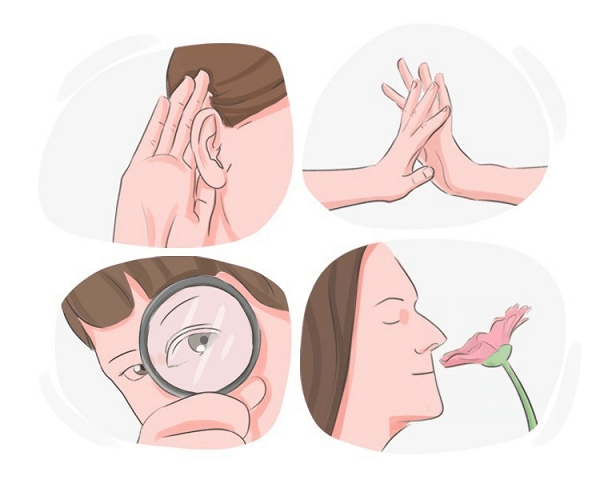
3. InteroceptionInteroception is the perception of a body's internal state, such as hunger, thirst, or exhaustion.It entails identifying signs from internal organs and bodily systems like the respiratory, cardiovascular, and digestive systems. This sense is crucial for controlling physiological processes and preserving homeostasis. The brain enables us to react to the body's requirements by processing this data. These senses work as a unit, allowing us to interact with and experience our environment subtly and complexly. They are essential to daily living, from fundamental bodily functions to more complex mental processes like decision-making and problem-solving. Perception and InterpretationThe analysis and interpretation of sensory inputs come from the brain. The operation of this process is described as follows: Sensory ReceptorsPerception results from environmental signals being recognized by sensory receptors. Each sense has distinct receptors that can identify stimuli like light, sound, or chemicals. 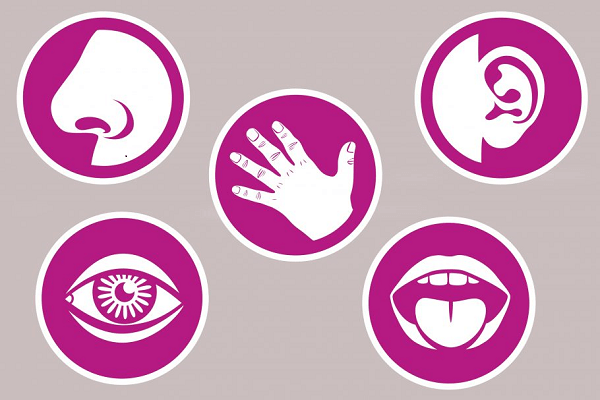
Processing of Sensory InformationThe brain is prompted to process an external stimulus when sensory receptors recognize it. These impulses are transmitted to the areas of the brain responsible for interpreting this type of sensory input via neural connections. PerceptionBrain perception depends on the neural signals received after sensory processing. Various factors influence this perception, including previous interactions, expectations, concentration, and context. InterpretationFinally, the brain gives the newly created experience with meaning and employs that meaning to guide behaviour. Combining sensory data with other kinds of information is necessary for decision-making and taking action. The complicated and dynamic process of perception and interpretation requires the cooperative effort of many different brain regions.Individual differences, such as genetics, age, and society, also significantly impact it. Despite this complexity, our brains are remarkably adaptable, and with practice and experience, they can be taught to detect and interpret sensory data in novel and novel ways. Examples of Sensory Disorders and ImpairmentsSensory disorders and impairments may significantly impact a person's daily existence. Here are a few instances and their results: 1. Impairments to Vision
2. Impairments to Hearing
3. Smell and Taste Disorders
4. Touch Disorders
5. Sensory Processing Disorders
Sensory disorders and impairments can significantly impact the ability to communicate, engage with others, and navigate their surroundings. People with sensory impairments must receive the proper support and accommodations to optimize their quality of life and freedom. 
The Function of Senses in Mood and BehaviourFew examples of where our senses influence our emotions:
The Philosophy of SenseIn general, the philosophy of sense poses significant queries about the nature of reality, how our senses affect how we perceive the world, and how sensory experience is subjective and singular. The following are the philosophical concepts: Sensory IllusionsThese deceptions show how finite and susceptible to error our perceptions are. For instance, optical illusions can alter our perception of size, shape, and distance or cause us to see objects that are not there. These deceptions test our perceptions of reality and draw attention to the intricate connection between sense experience and how the world appears to us. QualiaThe term "qualia" alludes to the individualized perception of sensory stimuli. Observing the colour red or sampling chocolate, for instance, are two examples. This idea emphasizes the individuality and subjectivity of sensory experience and begs whether it is possible to completely comprehend or explain another person's subjective experience. Sensory MarketingUsing the senses to affect consumer behaviour is called sensory marketing. A marketing tactic known as sensory marketing uses the senses to sway customer behaviour. The following are associated with this subject: The Role of Five SensesThe function of each of the five senses can be used in visual marketing. For instance, olfactory stimuli like scents can improve the atmosphere and encourage customers to stay longer in a shop. In contrast, visual stimuli, such as packaging and store design, can influence buying choices. The use of each sense in marketing and its impact on consumer behaviour can be manipulated. 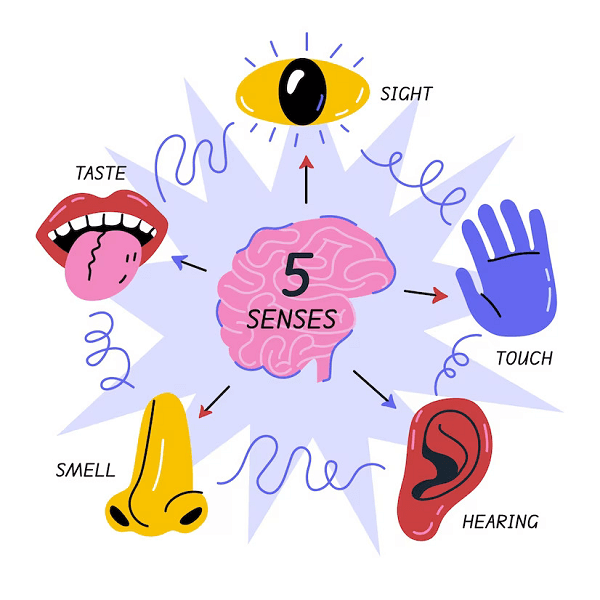
Cross Modal CommunicationsCross modal correspondences are the links between different sensory inputs. For example, the colours red and the sound of a crackling fire are frequently associated with comfort and warmth, respectively. By understanding cross modal correspondences better, marketing professionals can create sensory experiences more aligned with consumer expectations and preferences. Multi-Sensory BrandingMulti-sensory branding entails delivering a unified sensory experience across various components, such as packaging, promotion, and in-store settings. Businesses can effectively use multi-sensory branding to establish a distinctive and memorable brand identity. Ethics-Related MattersAlthough sensory marketing can be a successful tactic, it raises ethical questions about trickery and exploitation. Marketers must exercise caution when using sensory stimuli to avoid misleading or taking advantage of customers. The ethical issues surrounding sensory marketing are to be evaluated, as well as marketers are responsible to ethical uses of sensory stimuli. Sensory Processing DisorderA neurological condition known as sensory processing disorder (SPD) causes problems for the brain in processing and reacting to sensory data from the body and surroundings. Symptoms that people with SPD may encounter include: HypersensitivityThe highest reaction to sensory stimuli such as sight, touch, or sound is hypersensitivity. This may result in discomfort, anxiety, and a desire to avoid particular scenarios or settings. Hypo-sensitivityA diminished sensitivity to sensory stimuli may cause a person to seek out the sensory stimulus by touching or chewing on things or engaging in risky activities. Sensory Integration ProblemsProblems bringing together data from various sensory systems to create a coherent view of the outside world. This may make it more difficult to balance, move with coordination, and be spatially conscious. Emotional and Behavioural issuesSPD can cause social contact, behaviour, and attention issues. People with SPD may struggle to control their emotions and become quickly agitated, irritable, or anxious. Because of how closely its symptoms resemble those of other disorders like ADHD or autism, SPD can be challenging to identify. Typically, an occupational therapist or another qualified healthcare expert will conduct a thorough evaluation as part of the diagnosis. Occupational therapy is frequently used to treat SPD because it concentrates on helping patients learn coping mechanisms and skills for sensory integration. There may also be benefits from additional interventions like counselling, adaptive equipment, and sensory diets (a schedule of sensory exercises). Sensory IntegrationThe process by which the brain gathers, arranges, and interprets sensory data from the environment and the body, integrating this data to create a coherent view of the world, is known as sensory integration. Daily tasks depend heavily on sensory integration, including movement, communication, and social interaction. Information from various sensory systems, such as proprioception (the sense of body position and movement), vestibular sense (The sense of balance and spatial orientation), and the five traditional senses (sight, hearing, touch, taste, and smell), are combined during sensory integration. The brain uses this sensory data to organize and carry out movements, keep posture and balance, and react to environmental changes. Various issues, such as issues with balance, coordination, and spatial awareness, as difficulties with fine motor skills, attention, behaviour, and social contact, can all be brought on by sensory integration issues. Insufficiencies in sensory integration can also factor in developing disorders like sensory processing disorder, autism, and ADHD. People with sensory integration issues can learn coping mechanisms and improve their sensory integration skills with occupational therapy's assistance. Swinging, bouncing, and playing with textured objects are just a few of the activities used in sensory integration treatment to stimulate various sensory systems and encourage the integration of sensory information. Adaptive tools, sensory diets (a schedule of sensory exercises), and counselling are a few additional interventions that may be beneficial. Sensory Perception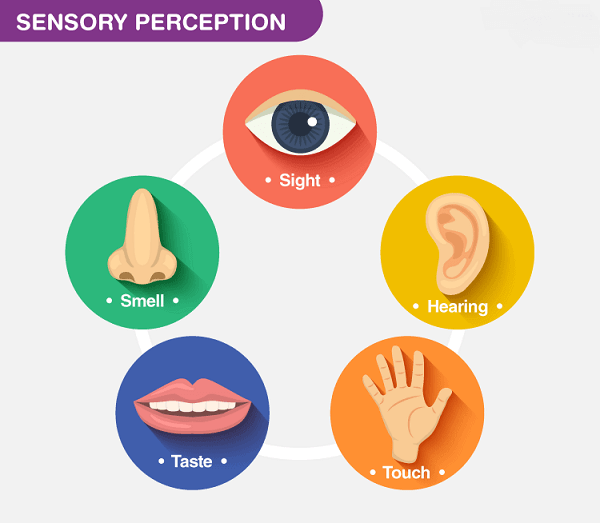
The process of sensory perception starts with detecting sensory stimuli by specialized body receptors, such as the rods and cones in the eyes that detect light or the hair cells in the inner ear. ConclusionAdvances in sensory technology and research are the future directions. Research and technological developments in sensory systems have the potential to alter many facets of our existence significantly.
Next TopicServer Definition
|
 For Videos Join Our Youtube Channel: Join Now
For Videos Join Our Youtube Channel: Join Now
Feedback
- Send your Feedback to [email protected]
Help Others, Please Share










